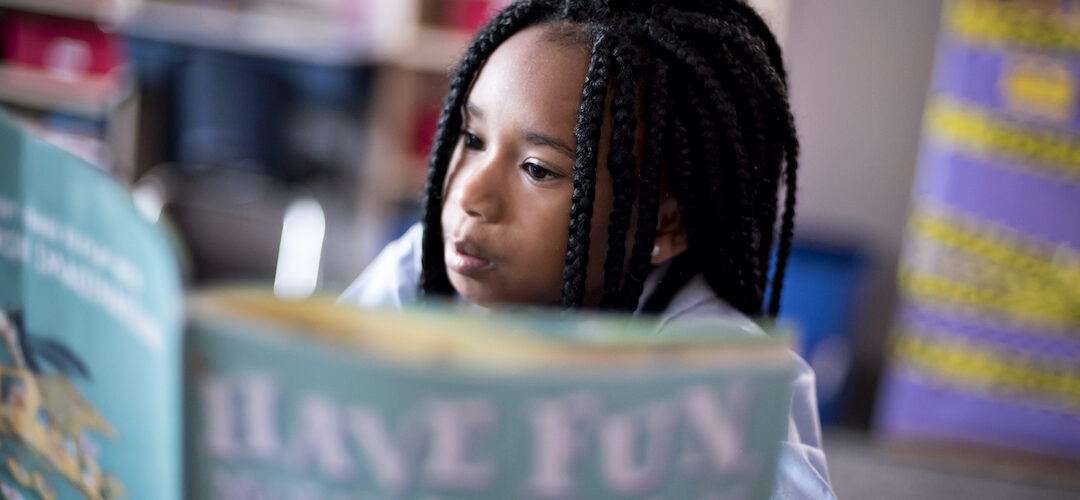A Student Perspective: Bullying in the Age of COVID-19
By Mylazia and Kovonna McPipe
This post is the sixth in our Education at a Distance series, centering the voices of students, parents, and educators during the COVID-19 crisis.
A lot has changed about how and where we learn since COVID-19 closed schools and moved learning online. But at its core are many of the same challenges. While educators and administrators focus on student-teacher interactions, we need them to remember that interactions between students have been forced into new spaces as well. Bullying is still here, but now it’s even harder to call out.
As a new school year begins, most of us will be engaged in distance learning—all or some of the time. Online there’s no supervision unless a parent is standing over you 24 hours a day or whenever a child is online. And digital spaces are where a majority of peer-to-peer and teacher-to-student interactions will be.
What learning looks like this fall isn’t entirely clear, but for us, it will be done from home. This spring, some classes required video chats with teachers and other peers and some required one-on-one engagement. And aside from attendance, no one is monitoring student engagement and activities. So, students were free to ignore the rules as well as the instruction of administration. Sadly, people feel more powerful behind a screen.
This spring with schools closed, we experienced new harassment and an unexpected response—bullying went
This spring with schools closed, we experienced new harassment and an unexpected response—bullying went unchecked. We had students say, “Kill yourself, ugly” and watched as rumors spread. And when we tried to report it, the incidents were brushed off—saying, “They’re just playing around, don’t think about it as a serious matter” or “I don’t think they would do something like that.”
Teachers disregarded our pleas for help, and our own efforts failed—leaving what felt like two solutions: surrender or endure the bullying. One of us has been called a name so many times that it just feels easier to join the crowd and take it on then keep asking for it to stop.
It’s Not Just Us
When you think about the challenges facing students at this moment, many are new, but bullying is a challenge we know—and it’s not getting better. In a national Comparitech study conducted this year, 60% of parents with children aged 14 to 18 reported them being bullied. And that was in March.
Educators Play a Role Now More Than Ever
Like it or not, educators are now often at the center of this problem—responsible for classroom management and their own behaviors in new or more significant online environments. Students can be vicious in comments (especially anonymous ones). And educators have a responsibility to address it.
Many educators ignore the bullying, but not the bullies. A lot of bullies are class clowns, making them likeable. So, teachers enjoy the bully when they make them laugh. But when educators ignore the bully’s behavior, it gets worse because the educator has already been laughing and contributing to the behavior by ignoring the fact that the bullying is happening.
It’s important to remember that educators can contribute to bullying themselves by degrading and embarrassing students as well. Educators are adults, and we expect more out of them because they are our role models and educators—the people who help shape and mold us. It’s so important to keep this in mind as we have interactions behind unsupervised screens and closed doors.
Impact on Health and Learning
Cyberbullying is far from the hot-button issue right now. But it’s important to remember that it causes many teenagers to withdraw from social interactions. Online bullying can start at one person and move to a whole crowd of people, even adults and people unknown to the person entirely can become engaged with bullying. It can cause depression, low self-esteem, and can even lead to suicide. People under 25-years-old and who have experienced online bullying are twice as likely to cause self-harm or commit suicide, according to Comparitech’s study. And it is very difficult to focus on schoolwork while being bullied.
5 Things Parents Can Do
Here’s what we know: Parents should be involved early. Get to know your child, spend quality time with them, and their friends—even online—so you know their likes and dislikes. Have talks with them about anti-bullying, self-esteem, mental illness, and what it is like being a teenager—for your child and as a parent.
- Pay attention to your child’s behavior changes. They could be getting bullied or they could be a bully themselves. Some kids’ behavior can change when they are experiencing things like trauma. They can become loud and pushy or silent and keep to themselves.
- Engage with the educators, bullies, and your child when you hear its happening first hand.
- Don’t assume that “kids will be kids” and it will just stop.
- Talk to your child about how to prevent being bullied and being a bully.
- Get involved and engage, engage, engage with your children. Your child/children will then be able to talk to you and trust you when situations do happen.
EdAllies seeks to elevate diverse voices and foster a candid dialogue about education. While we provide our blog as a platform for EdVoices and other guest contributors, the views and opinions they express are solely their own.

